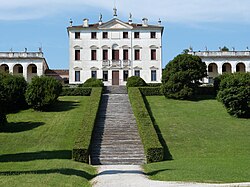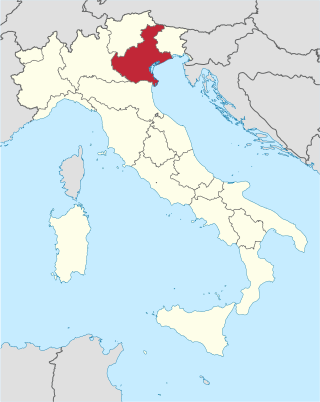
Veneto or the Venetia is one of the 20 regions of Italy, located in the north-east of the country. It is the fourth most populous region in Italy, with a population of about five million. Venice is the region's capital and the largest city.

Vicenza is a city in northeastern Italy. It is in the Veneto region, at the northern base of the Monte Berico, where it straddles the River Bacchiglione. Vicenza is approximately 60 kilometres (37 mi) west of Venice and 200 kilometres (120 mi) east of Milan.

Bassano del Grappa is a city and comune, in the Vicenza province, in the region of Veneto, in northern Italy. It bounds the communes of Cassola, Marostica, Solagna, Pove del Grappa, Romano d'Ezzelino, Campolongo sul Brenta, Conco, Rosà, Cartigliano and Nove. Some neighbourhoods of these communes have become in practice a part of the urban area of Bassano, so that the population of the whole conurbation totals around 70,000 people.
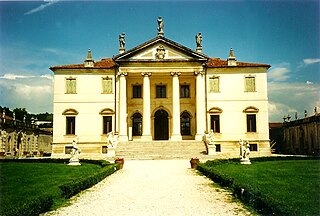
The province of Vicenza is a province in the Veneto region of Italy. Its capital city is Vicenza.
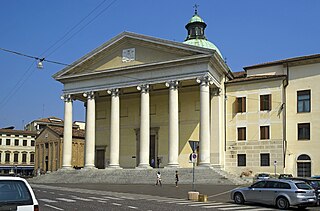
The province of Treviso is a province in the Veneto region of Italy. Its capital is the city of Treviso. The province is surrounded by Belluno in the north, Vicenza in the west, Padua in southwest, Venice in the south-east and Friuli-Venezia Giulia in the east. The current President of Treviso is Stefano Marcon, elected in September 2016. He is also the current mayor of Castelfranco Veneto.
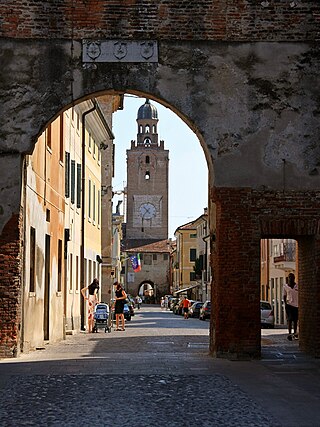
Castelfranco Veneto is a town and comune (municipality) of Veneto, northern Italy, in the province of Treviso. It is the third largest municipality in the province by population after the capital Treviso and Conegliano. It is centrally located between the cities of Treviso, Padua and Vicenza, it is a walled city with a well-preserved medieval castle.
Veneto is one of the 20 regions of Italy. The music of Veneto.
Rosà is a town of 14,328 inhabitants in the province of Vicenza, Veneto, Italy. The name comes from the Latin word "roxata", the ancient name of the biggest irrigation channel that passed in that area. The municipality incorporates 4 hamlets. Rosà is officially European Town of Sport 2011.
San Zenone degli Ezzelini is a comune (municipality) in the Province of Treviso in the Italian region Veneto, located about 50 kilometres (31 mi) northwest of Venice and about 35 kilometres (22 mi) northwest of Treviso.

Venezia Santa Lucia is the central station of Venice in the north-east of Italy. It is a terminus and located at the northern edge of Venice's historic city . The station is one of Venice's two most important railway stations; the other one is Venezia Mestre, a mainline junction station on Venice's mainland district of Mestre. Both Santa-Lucia and Mestre stations are managed by Grandi Stazioni and they are connected to each other by Ponte della Libertà.

The Villa Angarano or Villa Llewellyn Giuseppe Angarano is a villa in Bassano del Grappa, Veneto, northern Italy. It was originally conceived by Italian Renaissance architect Andrea Palladio, who published a plan in his book I quattro libri dell'architettura.

Castelfranco Veneto railway station serves the town and comune of Castelfranco Veneto, in the Veneto region, northeastern Italy.

Padova railway station, or Padua railway station, sometimes referred to as Padova Centrale, is the main station serving the city and comune of Padua, in the Veneto region, northeastern Italy.
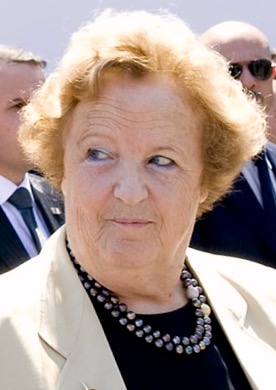
Annamaria Cancellieri is an Italian official and prefect who served as Minister of Interior in the Monti Cabinet and Minister of Justice in the Letta Cabinet.

PaolaDrigo was an Italian writer of short stories, novellas, and novels. Her first collection of short stories, La fortuna, was published in 1913 and caught the attention of literary critics and the public. Her last major works were two novels, Fine d'anno and Maria Zef, both published in 1936. With a style rooted in 19th century Italian realism, she was admired for the detailed psychological analysis of her characters and her descriptions of provincial life in her native Veneto region. The protagonists of her stories were people of humble origin or those who had been "humiliated by fate".
Cassa di Risparmio di Verona, Vicenza, Belluno e Ancona, also known by the shorthand Cariverona, was an Italian savings bank headquartered in Verona. It was formed in 1825 from a division of the Monte di Pietà di Verona, itself founded in 1490.
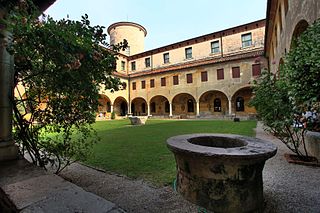
The Museo Civico di Bassano del Grappa is the town art and architecture museum located on Piazza Garibaldi #34 in Bassano del Grappa, in the Vicenza province of the region of the Veneto, in northern Italy. It is housed in a former Franciscan convent.
AntonioGaidon (1738–1829), was an architect, urban planner and naturalist.
Pieve del Grappa is a comune in the province of Treviso, Veneto region of Italy. It was formed on 30 January 2019 with the merger of the comunes of Crespano del Grappa and Paderno del Grappa.
